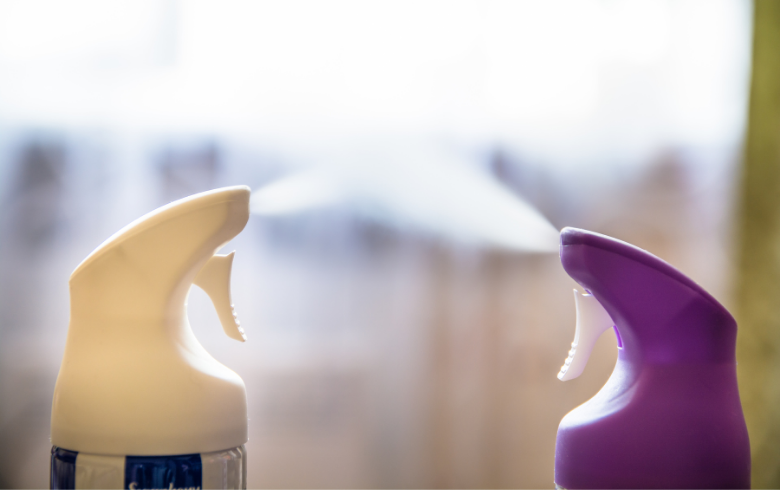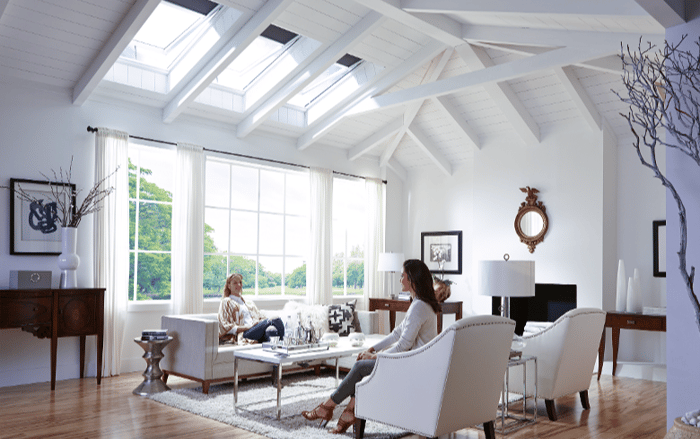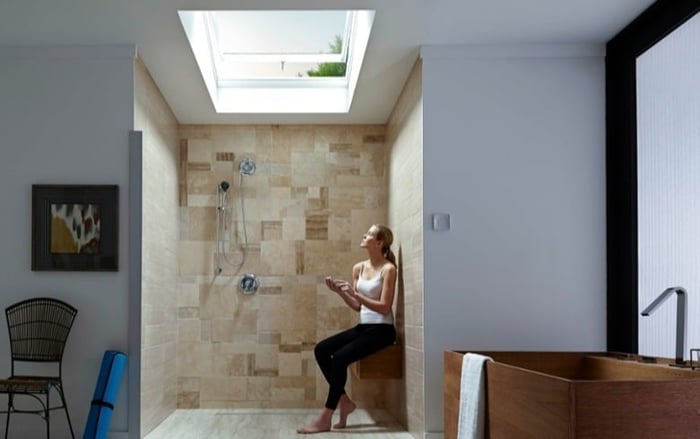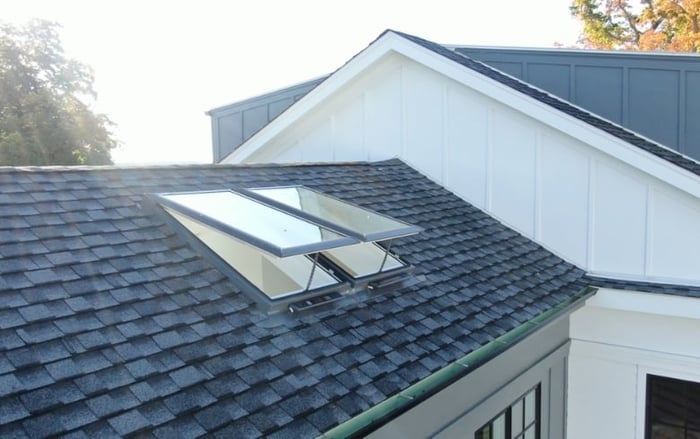10 Household Objects Polluting Your Home's Air
Read Time 5 mins | Written by: VELUX Skylights

When it comes to the air we breathe, we have a tendency to focus on the dangerous particles in the outdoor air: smog, car exhaust, and industrial fumes are all air pollutants to be concerned about. But did you know that, according to the Environmental Protection Agency (EPA), the air in your home can be up to five times more polluted than the air outside?
Experts already estimate we spend roughly 90% of our time indoors. And with a global pandemic still going and the cold of winter on its way, we're posed to spend even more time inside in the coming months. So, what can you do to get your home's air cleaner? Let's start with what's causing the pollution.
What's In Your Air?
Over the years, buildings have become much more energy efficient. While this is great for your energy bill, scientists have also noticed a serious uptick in the concentration of air pollutants indoors because there's less of an exchange between interior and exterior air. Pollutants like tobacco smoke, nitrogen dioxide, carbon monoxide, particulate matter agents, formaldehyde, volatile organic compounds (VOCs), and radon are all ones to watch out for, and these are the 10 most common household objects emitting them into your home:
Aerosol Sprays
Our first household object not only emits VOCs in your indoor air — it also affects the outdoors. A 2018 Science study found that aerosols, like cleaning and personal care products, make up half of outdoor VOC emissions in cities. Decrease the pollution load inside and out by avoiding aerosol sprays whenever possible.
And if you're the type to opt for air freshener sprays, it might be time to reconsider. Aerosol air fresheners can emit over 100 different chemicals, and the cocktails can trigger migraines, asthma attacks, and breathing troubles. To keep air smelling clean, the simplest solution is to open a window.
Air Purifiers
Did you do a double take? It's true: the type of air filtration system you have may be making your air worse. Some air purifiers generate ozone which, done indoors, can be harmful to your health. When it comes to air purifiers, look for a model with a HEPA filter.
Candles
Who doesn't love a good candle? The air in your home for one. Candles are substantial sources of ultra-fine and fine particles, which contribute to the exposure of indoor particulate matter. This has been associated with lung inflammation and can be especially troublesome for those with asthma. What's more, certain scented candles can also emit harmful formaldehyde. But all hope isn't lost: beeswax and soy candles don't present these problems to your home's air.
Cleaning Products
That clean smell you get after a day of deep cleaning may not be as good for your indoor air as you think. Many cleaning supplies are a big source of VOCs in your air. Bleach, for example, when combined with a common citrus ingredient called limonene can increase harmful airborne particles as you clean, according to research from Environmental Science & Technology. For cleaner air after you clean, opt for unscented products as well as basic, natural cleaners like water with vinegar or baking soda.
E-Cigarettes
We know cigarettes in the house are a big no-no for good air quality, but did you know you should be just as restrictive with electronic cigarettes too? It's not smoke, but e-cigarette vapor contains ultra-fine particles at greater concentrations than conventional cigarettes and carcinogenic chemicals, according to the American Nonsmokers' Rights Foundation.
Granite
Luckily, your countertops are probably safe. But granite can produce radon — a naturally occurring radioactive gas and the second leading cause of lung cancer in the US. According to the EPA, indoor granite won't significantly increase indoor radon, but any exposed granite found in cracks in walls or in your foundation can lead to harmful levels. If radon levels are something you're worried about, you can get a radon test kit or hire a professional to test your home.
Humidifiers
As it gets cooler outside and we're cranking up the heat inside, many of us also crank up a humidifier to keep the air in our homes from getting too dry. But watch your humidity levels; according to the experts, it's best to keep humidity below 50%. Anything higher encourages mold formation and dust mites to flourish.
Stoves
Gas stoves may help make for an even cook, but they also create nitrogen oxide emissions. Additionally, cooking itself produces air-borne particles. But what are the chances of you giving up your stove? We're guessing close to none, so just make sure to have adequate ventilation in your kitchen when cooking. The vent above your stove is a good place to start, but double check that it's ventilating the air outside your home instead of just moving it to another part of your kitchen. Cracking open a window (or skylight!) while you cook is also a great way to ventilate the kitchen.
Paint
Everyone's got a spot in their garage for the nearly empty paint cans left over from home projects. But it might be time to reevaluate that. While having those colors at the ready may be helpful for any paint scuffs or touch-ups, the paint sitting in those cans could be polluting your air. Paint cans give off VOC gases that can cause problems with air quality and impact breathing. Some of these VOCs can even cause cancer, so dump the paint cans your keeping and opt for low-VOC paints in the future.
Wood-Burning Fireplaces
There's nothing cozier than curling up by the fire, but the air in your home isn't as big a fan of wood-burning logs. Burning wood, as well as cleaning up the ashes, can create high levels of particulate pollution and carbon monoxide exposure in your home. Factors like the size of the room and how well ventilated it is can help balance out the air quality after lighting a fire, so make sure to air things out after warming up.
How Skylights Can Help
As we've already mentioned a couple times, the best way to filter pollutants out of the air in your home is to freshen it up with some new air from outside. Typically, you'll do this by opening up a window and airing out the room. But with skylights, you can regularly air out your whole home by opening windows and skylights. This creates a phenomenon known as the Stack Effect, and helps whisk warmer, stale air out of your house while cool, fresh air spills in.
VELUX's venting skylights can also be paired with VELUX ACTIVE with NETATMO. Not only does VELUX ACTIVE allow you to control your skylights right from your smartphone, it also monitors the indoor air quality in your home. And with your authorization, it will open and close your skylights automatically to keep the temperature, humidity, and CO2 levels in your home safe and comfortable.
Ready to talk about what else skylights can do for your home? Book a virtual consultation to learn more today!
VELUX Skylight Systems
Reimagine Your Home With Natural Light and Fresh Air

HOME TOURS
Incorporating Fresh Air Throughout Your Home
Incorporating fresh air throughout your home is a great way to access these health benefits all year...
Keep Reading
HEALTHY LIVING
4 Ways to Clean the Air in Your Home Naturally
Clean the air in your home the natural way with regular ventilation, houseplants, and more!
Keep Reading
SKYLIGHT INNOVATIONS
VELUX is the Home of Energy-Efficient Skylights
At VELUX, we're doing our part to make the world a better place with daylight and fresh air.
Keep Reading